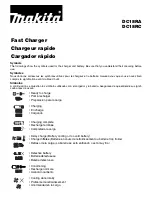
I
NSTRUCTIONS
M
ANUAL
D
IGIT
3001
R
ELEASE
.
N.2_M
13_10_08
P
OWERGEN
S.
R
.
L
.
V
IA
XXV
A
PRILE
,
5
L
OC
.
C
ORSALONE
C
HIUSI DELLA
V
ERNA
(A
REZZO
)
)
+39-(0)575-531015 - T39-(0)575-511891 E mail
www.batterychargerpowergen.it
P.Iva 01572290516
- 17 -
Charge end parameters may be accessed starting from the ones of the most recent cycle
(indicated with -0
) to the ones of the oldest cycle (indicated with -9
),
and vice versa. Cycle –0 is retrieved by pressing the right-hand "
EQU
" button. Cycle –9 is
retrieved by pressing the left-hand "
ON/OFF
" button. Memory cells are browsed by
pressing the following buttons; via the "
EQU
" button the memory buffer is browsed from
cell –0 to cell –9 and the other way around via the "
ON/OFF
" button.
After selecting the concerned cell, “
Sto
”
will be shown on the display. By
pressing the middle “
A/V
” button, the User will be able to browse the display menu and to
scroll and read the charging parameters stored for the selected cycle:
§
latest value of charging current delivered to the battery:
“
A.XXX
” expressed in
amps;
§
latest battery voltage value:
“
U.XXX
” expressed in volts;
§
total amount of charging minutes:
“
t.XXX
”;
§
total charging capacity delivered (ampere-hours integrated into the battery):
“
AH
”
and after 1 second “
XXXX
” expressed in ampere-hours.
After 10 seconds of buttons inactivity, the display will show “
Sto
”
again and then
“
End
”
.
8.5.
Alarms and Safeties
DIGIT 3001 implements a whole series of alarms and safety functions, thus assuring a
reliable operation of the control card.
In case of power failures, the charging cycle will not be enabled and, if active, will be
interrupted. The first LED "
power failure
" will be steadily lit.
In case of programming errors in the rated battery voltage, the charging cycle will not be
enabled and the display will show relevant alarm messages “
UMIn
”
and
“
UMAH
”
.
During the charging cycle, if the battery voltage is lower than the minimum or higher than
the maximum set value, (see line no. 6 and no. 7 of the programming menu), the cycle will
be interrupted and the alarm messages “
UMIn
”
and “
UMAH
”
will be
displayed respectively.
During the charging cycle, the microprocessor controls the charging time and makes sure
the charge is completed in a time shorter than the one set as
total charging time
(see line
no. 5 of the programming menu). If not, it will interrupt the charging cycle, turn on the fifth
LED "safety cycle" and display the “
End
”
message.
Also in this case the display menu will be available with the latest charging data, as well as
with the present data and the charging cycle log data.










































